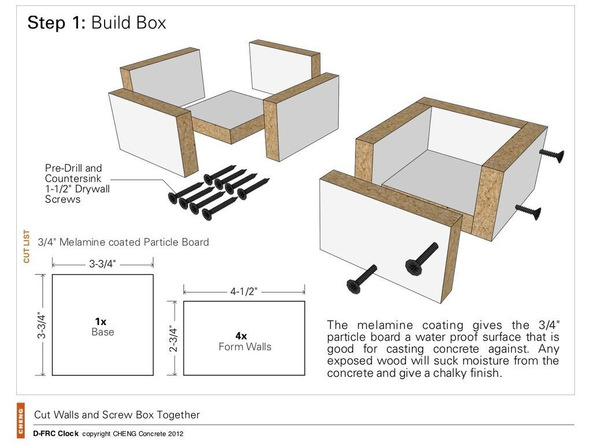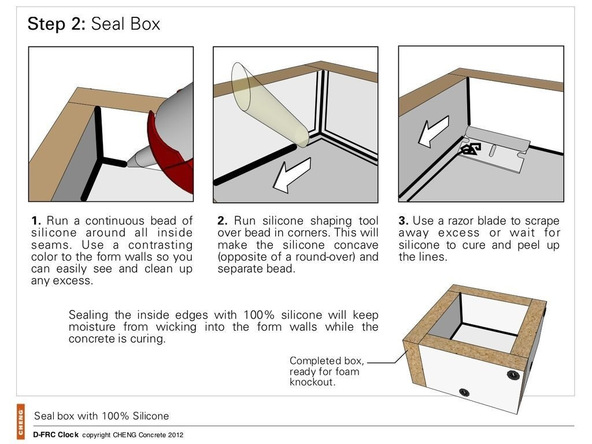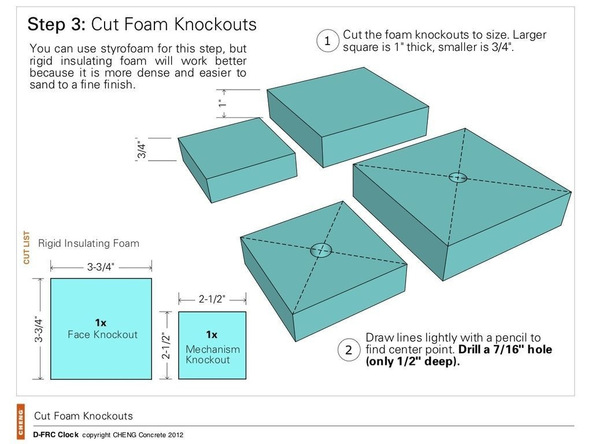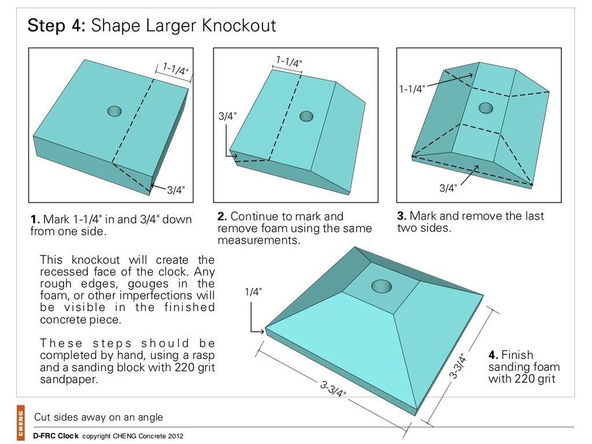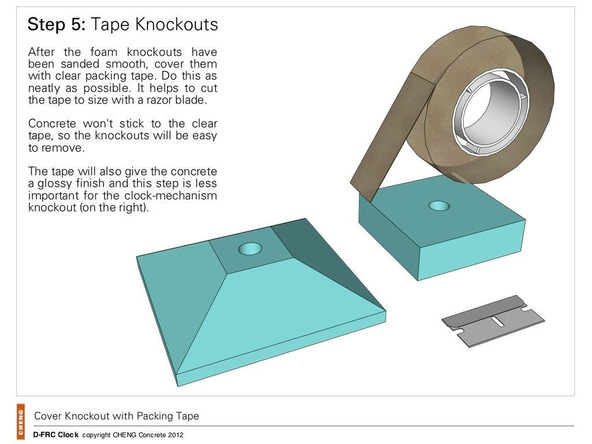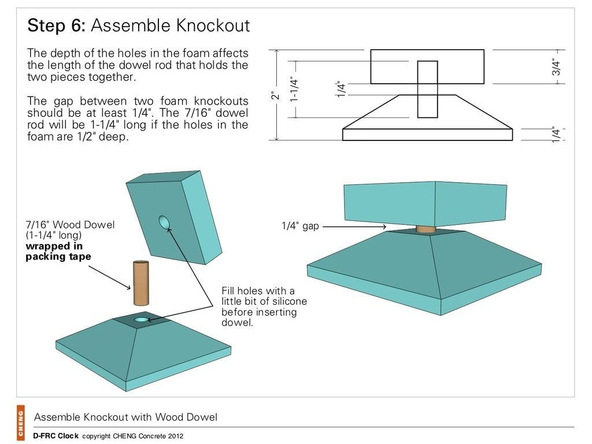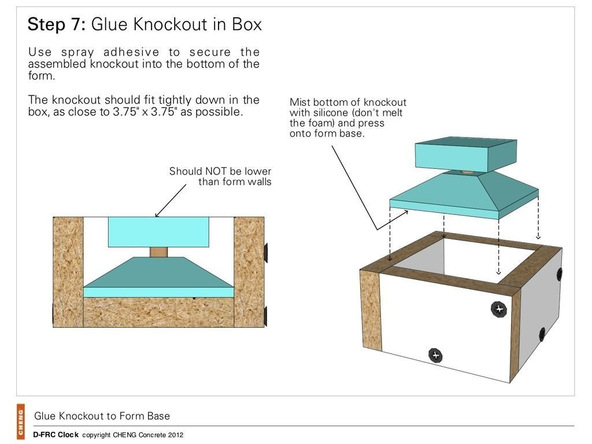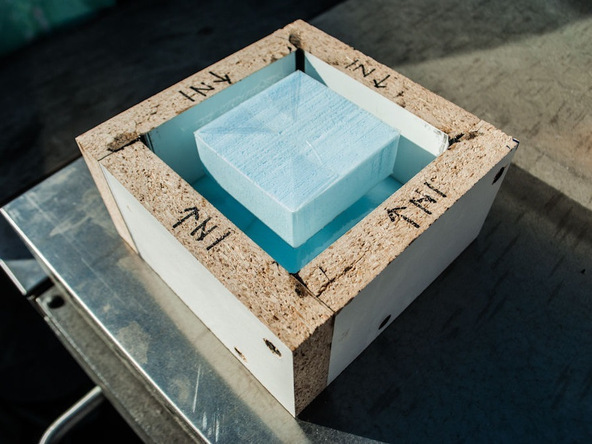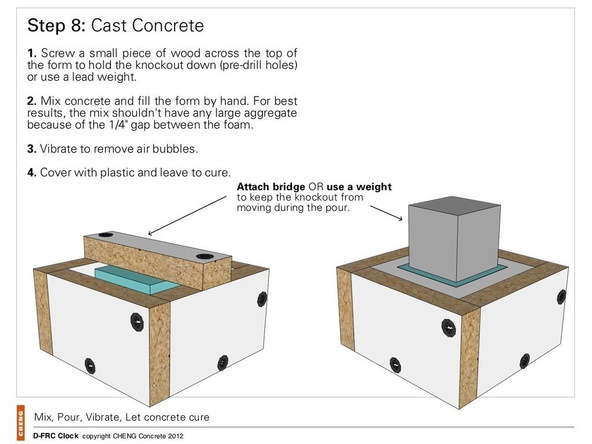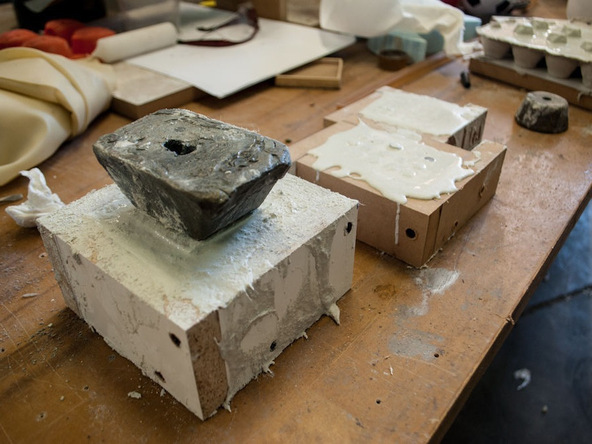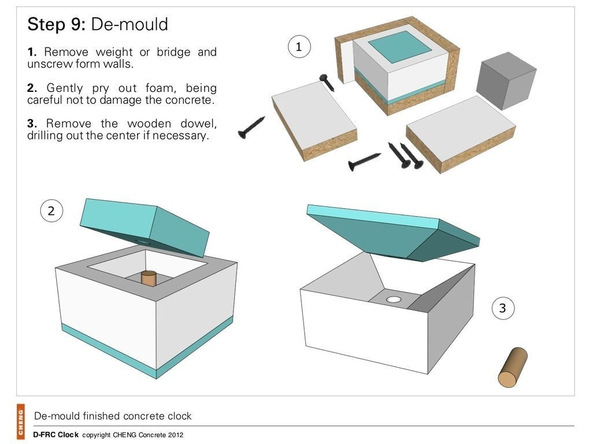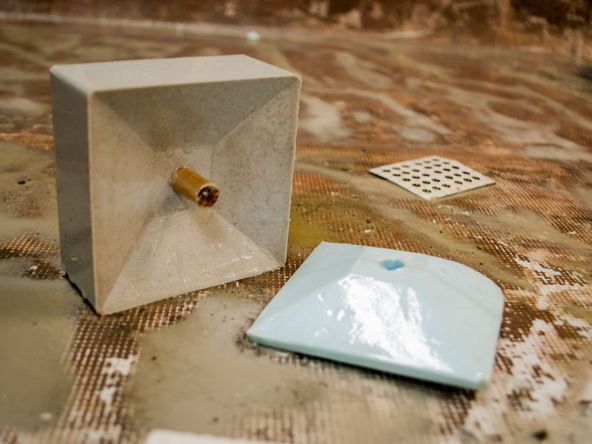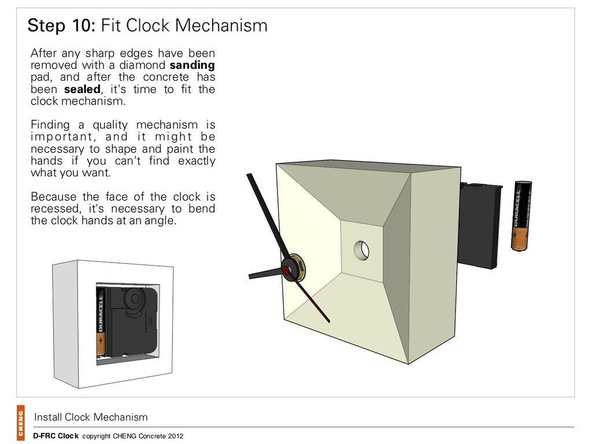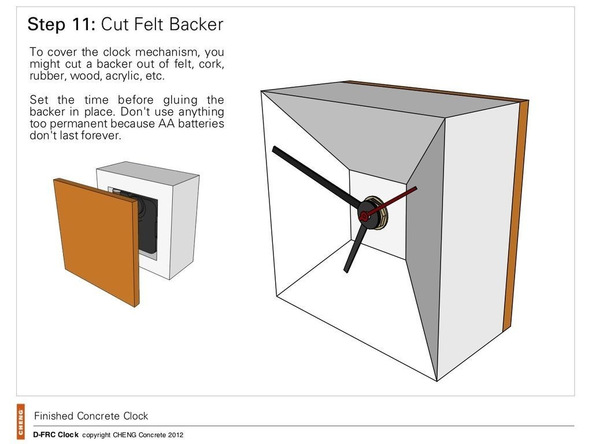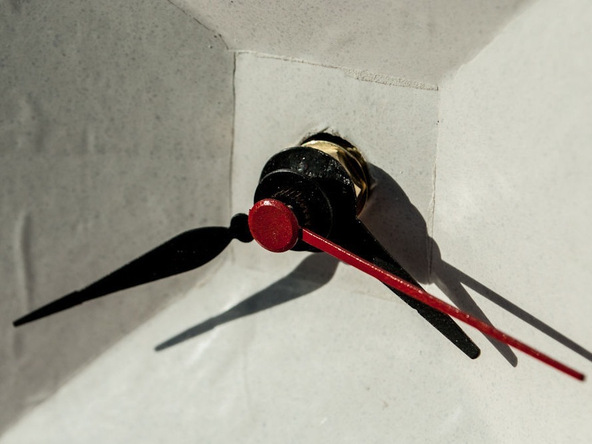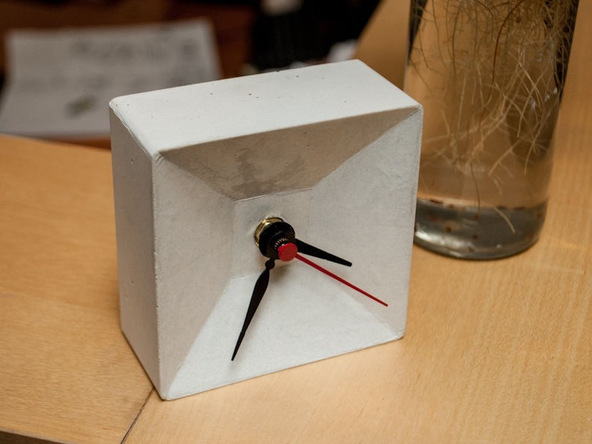This guide will show you how to cast a fiber-reinforced concrete clock using a melamine box as the form and rigid foam as a knockout to recess the clock hands and mechanism. You’ll be introduced to the basics of crafting with concrete.
What You’ll Need
- Hand Saw
- Cordless Drill
- 7/16″ Drill Bit
- Caulking Gun
- 100% Door and Window Silicone Caulk
- Sanding Block/Sandpaper (60, 100, 220)
- File/Rasp
- CHENG Corner and Seam-Shaping Tools
- Mixing Bucket
What You’ll Need
- Trowel
- Rubber Gloves
- Diamond Hand Sanding Pad
- CHENG Concrete Countertop Sealer
- Clock Kit + AA Battery
- 3/4″ Melamine-Coated Particle Board
- 1-1/4″ Drywall Screws
- Styrofoam, 2″ thick
- 7/16″ Wood Dowel Rod (2″ long)
- 3M Super 77 Spray Adhesive
- Clear Packing Tape
- CHENG D-FRC Casting Blend

